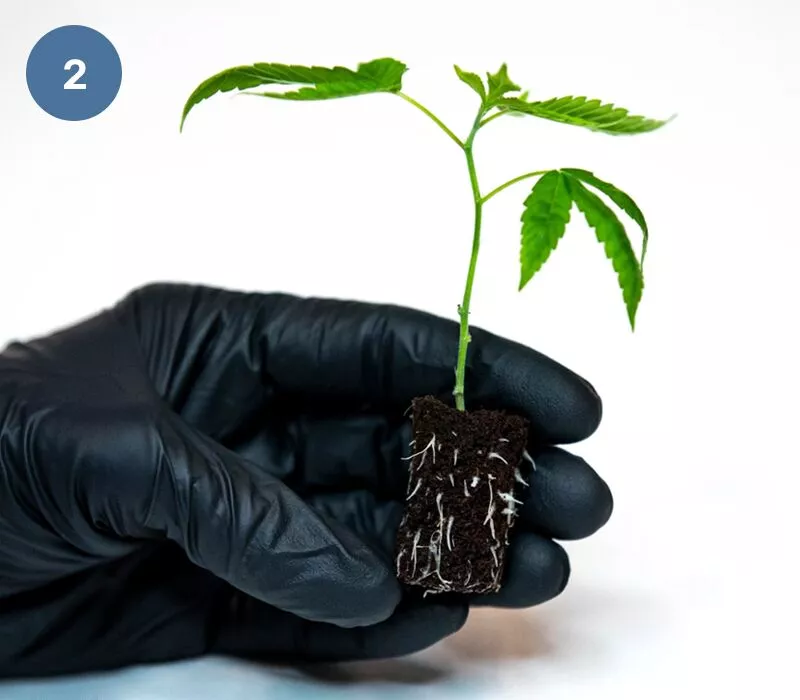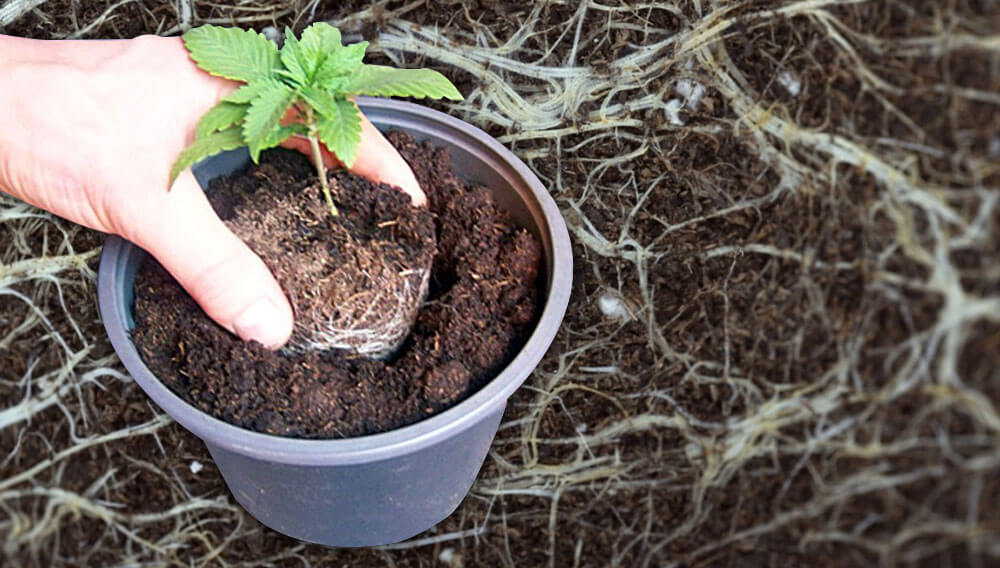English
How to transplanting cannabis plants 101
Transplanting a cannabis plant is a very important step in the marijuana growing process. When done correctly it brings many benefits, but when done incorrectly it can also be a stressful factor. We’ll tell you everything you need to know.
Transplanting cannabis is a super important moment
not only to make the plant stronger, but also to identify any type of problem in its roots. After all, not all problems are above ground, and transplanting gives you a unique opportunity to look beneath the soil surface. In addition, we can use this process to monitor the growth and health of our beloved cannabis plant.
Although many people think that it is the size of the plant that matters, in reality, when transplanting cannabis, we must take into account the development of the roots of the plant in question. It is imperative that we do this process as carefully as possible so that we don’t stress our little hemp plant!
Want to know more about this topic? Here, we will explain a little about its importance and show you the step-by-step procedure so that when the time comes, you know how to do everything correctly.
Why repot?
As we mentioned above, repotting is an essential step in the growing process so that you know what stage of development the plant is in, can check its size and rooting, and also learn more about its health. After all, the bottom is just as important as the top If the root has problems, you’ll want to address them as soon as possible so you don’t endanger your plant!
Our top tips right now are as follows:
Start small: sprout a seed and put it in a small place first, such as a plastic cup or mini-vase.
Do not use clear jars! Light can compromise its roots and ruin the work.
Are you going to put the hemp plant in a plastic cup? Before repotting, drill holes in the base so that the roots do not get stuck, damaged or stressed, and so that water can drain from the bottom.
Some cannabis growers recommend several repottings until you leave the plant in the final pot – and it is important to remember that the final pot should be large enough to allow the plant to flower. With some repotting you will be in a better position to closely monitor the development and health of the roots. However, it is essential to know how to measure: repeating the process can often stress the plant! Once or twice may be enough.
In this video Ontario Gardener shows you how to transplant Cannabis plants into 8 inch pots. The audio is in english, but you can turn on a subtitles if needed.
Smaller pots are also suitable to start with. After germination, use a small pot. This will help root development and reduce the likelihood of overwatering and throwing a waterfall of water on a small plant. (Yes, you can ruin some cannabis seeds by throwing too much water on them, don’t do it).
To see if you should repot the plant, tap the side of the container/vase to loosen the soil/roots from the walls. Slowly turn and feel with your hands to see if the plant will release itself in the square filled with roots, or if the soil starts to crumble. if the roots of the plant are holding the medium, now is the time! If the soil loosens, it means that it does not yet have enough roots to transplant into a larger pot.
Another important reason to repot is to allow the cannabis plant to grow – or even stop it. For those who grow indoors, it’s best to stop repotting when the plant’s height is appropriate for your growth. Increasing the contact area and root space allows for continuous growth, and when planted in soil, cannabis plants can reach many incredible feet!
Before transplanting cannabis, drill holes in the base to prevent root jamming, damage or stress and also to allow water to drain from the bottom.
When transplanting cannabis, pay attention to
For repotting, you must have very healthy soil that will nourish and feed the plant. It is important to check your substrate at this time. If it contains unwanted insects, fungi or even problems in the structure, you can address all of this before repotting (we’ll talk about pest control soon – so stay tuned here!).
It’s also time to take a close look at what your hemp plant’s roots are saying:
Brownish or greenish and sticky roots, as if they have slime, indicate problems.
You also need to watch out for certain species of nematodes and other root feeders such as aphids. These types of worms feed on the roots of the plant and can threaten its growth and cause disease. They look like small white worms, but make no mistake: these dangerous little creatures remove the cellular contents of the roots and prevent the plant from absorbing water and nutrients.
To get rid of bad nematodes, think about getting good, beneficial nematodes for your crops. Some nematodes will even help you get rid of fungus gnats and some other infections. We recommend you do some more research on this

The transplanting cannabis process step by step
Before you start the process, make sure the time is right. If it is… Let’s get our hands on the soil!
Step 1: Wash your hands or use gloves to avoid contaminating delicate roots. Keep the environment for this process as hygienic as possible!
Tip: the day before transplanting, try not to water the plants. This will allow the soil to stick slightly when removed from the starter container.
Step 2: Check that the receiving container is filled with culture medium and that there is enough room for safe repotting.
Tip: do not disturb or damage the roots when transplanting. The greatest risk of shock when transplanting for the first time is that it occurs directly as a result of root damage and disturbance. Stress can cause developmental problems or even turn the plant into a male or hermaphrodite!
Tip 2: when repotting, avoid bright light. This will also avoid transplant shock.
Step 3: remove the plant from the smaller container and transfer it to the larger one. Place it in the middle and fill the edges with soil.
Step 4: always water the plant well after transplanting. Be careful not to overwater the plant!
Do not disturb or damage the roots when repotting.
Other transplanting cannabis tips
This process must be done with care So here is some more information that we think is very important at this point
- Always watch the plants for signs of stress or crowded roots.
- Growers who feed nutrients need to halve their intake before repotting to avoid shock.
- Avoid putting too much soil in the pot during and after repotting. This can impair drainage and damage the root system.
- Do not repot after the plant has started its flowering cycle. The shock of transplanting can disrupt the initial development of the plant at this stage.
- Allow at least 1-2 weeks after transplanting for the plant to flower.
- Allow enough space in the final container for the plant to fully develop. For an indoor environment this means 3 to 5 litres.
- Larger plants may require cuttings and other support mechanisms to prevent damage to the structure during and after repotting.
If you respect all of this during the process, we guarantee that your cannabis plant will develop very well and will be extremely happy with more room to grow. After all, we are like that too, aren’t we?
And remember that quality cannabis seeds are the pillar of growing great plant. You can choose and buy cannabis seeds that we produce and know that are great and have superb genetics.
Do you have any special repotting tips? Tell us – we’d love to hear from you too.
Published by Tomas Zaoral
10/01/2023choose and buy cannabis seeds from our offer
our pleasure



























